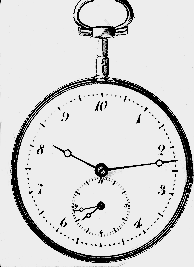SI Units
 The
international system of units is usually referred to as "SI Units"
Another expression often used is "metric units". SI units are one
type of metric unit. They are the standard units used for physics and
many other sciences throughout the world. The system is called
SI because of the first two initials of its French
name SystËme International d'UnitÈs.
The
international system of units is usually referred to as "SI Units"
Another expression often used is "metric units". SI units are one
type of metric unit. They are the standard units used for physics and
many other sciences throughout the world. The system is called
SI because of the first two initials of its French
name SystËme International d'UnitÈs.
The base units of the SI system are:
- 1 meter (m) - the base unit for length
- 1 kilogram (kg) - the base unit for mass
- 1 second (s) - the base unit for time
All quantities in the SI system use these units or combinations of
them. One can get other units with standard prefixes such as "nano"
and "mega" from these base units by simple multiplication with
powers of ten. The rule has one
exception: time. For subdividing the second, one uses milli,
micro, nano, etc. But for multiples of a second, it is not
conventional to use kilo- or megaseconds. In their place we use
minutes, hours, days, months, and years which are not related to the
second by powers of ten.
For example, the day has 24 hours, not 10. When the SI system was
originally proposed in 1792, an attempt was made to make the day a
metric unit also. The watch in this picture is a result of this
attempt. However, as is clear to everyone, this idea did not
succeed.
How are the base units for the SI system defined?
- 1 meter is the length that a light beam in vacuum travels in a
fraction of 1/299792458 of a second.
- 1 kilogram of mass is defined as the mass of the international
prototype of the kilogram. This prototype is stored in Paris,
France.
- 1 second is the time interval in which 9192631770 oscillations
of the wave take place that corresponds to the transition between
the two hyperfine states of the ground state of the cesium-133
atom.
(There are 86400 = 3600·24 seconds in a day. Up to 1960 this
was the standard definition of the second, but now we use the
above atomic definition, because it is more precise.)
© MultiMedia
Physics, 1999
 The
international system of units is usually referred to as "SI Units"
Another expression often used is "metric units". SI units are one
type of metric unit. They are the standard units used for physics and
many other sciences throughout the world. The system is called
SI because of the first two initials of its French
name SystËme International d'UnitÈs.
The
international system of units is usually referred to as "SI Units"
Another expression often used is "metric units". SI units are one
type of metric unit. They are the standard units used for physics and
many other sciences throughout the world. The system is called
SI because of the first two initials of its French
name SystËme International d'UnitÈs.